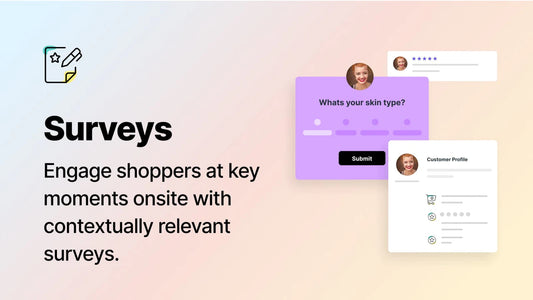How many quotes can you reel off about how the customer is at the epicentre of every successful business?
“Satisfaction is a rating. Loyalty is a brand.”
“Make a customer, not a sale.”
“If you are not taking care of your customer, your competitor will.”
“When you serve the customer better, they return on your investment.”
There is no shortage of quotes that promote the importance of treating your customer right and making sure that your product is the best on the market. And the truth is that the customer should be one of the most important considerations in your business; as without your customer, what is the point of your business? And more importantly, where does your revenue come from?
What is Customer Experience?
Customer Experience has evolved massively over the last couple of years and is continuously evolving as we come out of the other side of the global pandemic that gripped us all, hard.
Customer Experience, also abbreviated as ‘CX’ can mean a multitude of things to a multitude of people; but the broad strokes view on what CX is, is how customers perceive their interactions with your company.
Historically, when people used to talk about Customer Experience they would be referring to the traditional sales and marketing touch points along the customer buying journey. This would have been well turned out and attentive sales assistants in store, gripping shop windows, easy to navigate shopping aisles, and a check out process that didn’t involve queueing. And while Customer Experience is still all about these things, it is about so much more now too.
But with research suggesting that 9 in 10 people have shopped and purchased something online in the last 12 months, you would be remiss to think that CX didn’t exist online.
How often do you browse a website and complain that the pages load slow, or the categorisation makes it difficult for you to find the product that you want, or that the checkout process is clunky and requires you to submit too much information? What you are complaining about is the customer experience that you are receiving from the website or app that you are shopping on.
Whose responsibility is Customer Experience?
Historically, Customer Experience used to be the responsibility of the Marketing Director and the Operations Director to deploy into their areas of the business. However, businesses can no longer silo off Customer Experience to certain departments within the business for them to work on independently. In 2022, CX has to be cohesively delivered across the full spectrum of the business.
How can I measure Customer Experience?
There is no shortage of acronyms that you can use to measure how good the experience you are providing a customer is. Some of the traditional retail calculations for CX are;
CES - Customer Effort Score : Using a CES scoring system through survey / feedback delivery will help you to establish how much effort your customer had to put in to complete a task. The more effortless you make the shopping experience the higher the CES score, and the stronger your customer experience is.
CRR - Customer Retention Rate : Using a CRR calculation you can identify how many customers stay with your business over a defined period of time, or continue to shop with you on a repeating basis after their first purchase. A high retention rate, and a low customer churn rate is indicative that your product proposition is strong and your customer experience is too.
FCR - First Contact Resolution : Using a FCR calculation will help you to identify how many customers who had an issue were remedied within one interaction with your business. There can be nothing more off putting to a consumer than having to battle through a complicated refund policy, or having to submit multiple returns forms just to get the resolution that they want. And a put-off customer is one who is unlikely to return.
What are the 3 most important factors that influence Customer Experience online?
If we narrow in our focus to what factors influence CX online (be it via a website or an app) the number of elements to consider can swell quite significantly; but we’ve compiled a shortlist of the 3 most important factors that influence customer experience online here:
1) Speed is a CX Factor
It may sound obvious, and maybe even a little uncomfortable, but in 2022, speed is one of the most important keys to CX success. Customers have a ‘want-it-now’ mentality that has been enabled and intensified by the internet and the competitive marketplaces that the internet has enabled.
Am I delivering the speed people need? Is probably a question that sounds borderline illegal when out of context, but from a CX perspective it is a question that should include these key considerations:
i/ Is my website fast? How does it stand up against that of my competitors?
ii/ Can my customers get from Landing Page (quite often the homepage) to Checkout via Product (and cheeky, but convincing upsells) in just a few clicks? Is is seamless?
iii/ After my customer has checked out am I presenting delivery timescales, next steps and brand engagement opportunities quickly and concisely? Are my after-sale processes the best they can be?
2) Omnichannel consistency is a CX Factor
If you are a bricks and mortar retail chain, with a website and an app, and a customer service call centre; you are operating across multiple channels. This is great because you are giving your customer options on how best suits them to interact with you. But is there consistency across each of your channels? From a CX perspective you should consider:
i/ Are my customers digital interactions (for example via Live Chat) accessible to the call centre? Or does my customer have to repeat their needs multiple times?
ii/ Are my service levels the same across all channels or does the quality of the customer experience my business give vary based on what channel customers engage through.
3) AI and Automation are CX Factors
Artificial Intelligence (AI) is no longer a thing of the future, it is already here; and the capabilities of Automation have never been so advanced. Integrating both of these into your digital channel offering has never been so instrumental to delivering industry-leading CX.
If you want to learn more about how to elevate your digital offering with AI and Automation, then you need to get in touch with us and we will blow your mind (not literally, although…) with how AI and Automated Workflow can infinitely improve your customer experience and the ROI that comes from your sales and marketing activities.
Engaging an Agency to deliver CX
When you want to build a new website, you engage a web development agency because they have the knowledge, data, expertise, formulae and process to create a best-in-class digital platform. If you are looking to audit the customer experience your digital platform is providing, and looking to develop a best-in-class CX strategy, you should engage a CX agency.
Here at Blend Commerce, we are pioneers in CX for Shopify Plus Merchants. If you want better ROI from your marketing spend, get in touch with us today.








